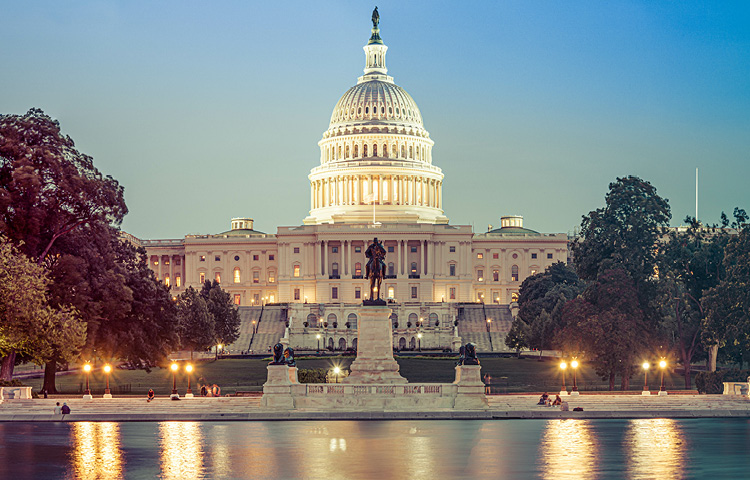What Does History Tell Us?
Since the enactment of the U.S. government’s current budget and appropriations process in 1976, there have been 20 funding lapses, of which only four have resulted in official government shutdowns lasting more than one business day.[1] Past shutdowns have ranged greatly in length, scope and economic impact with the most significant government shutdowns occurring in 1995-1996 (26 days total, partial shutdown), 2013 (16 days total, full shutdown) and in late 2018/early 2019 (35 days, partial shutdown). Below are a few observations we’ve made based on past shutdowns:
- A drag on economic growth: Estimates of the GDP drag vary but most show that a shutdown reduces real GDP growth by 0.1-0.2 percentage points (pp) at an annualized rate per week. A one-month shutdown translates into a 1.5-2.0 pp impact for GDP growth. The decline in economic activity comes mainly from the lost output from the furloughed federal workers along with a decline in consumer spending both from the government workforce (even non-furloughed workers don’t get paid until a budget agreement is made) and the indirect impact on the private sector. While most of this drag is recouped in subsequent periods after a budget agreement is made, the Congressional Budget Office (CBO) has estimated that the partial January 2019 shutdown resulted in some permanently lost output.
- The longer it goes, the greater the impact: The sharp curtailment of government services creates logjams in the economy that compound overtime. Even essential services are harder to deliver, particularly if workers who are not being paid stop showing up (which has happened in prior shutdowns). So far, the Administration is planning to furlough 737,000 workers. A few examples of government operations that tend to be disrupted: the Small Business Administration's release of loans to small businesses are stopped or delayed, refinancing/new home purchase applications at FHA are put on hold, issuances of import/export licenses are delayed, TSA staff shortages cause airport lines to lengthen and delays to become more widespread—and the list goes on. For data nerds out there (and the Fed), if the shutdown lasts long enough, the release of key economic indicators is delayed as federal economists are furloughed! The longer the shutdown, the greater the direct impact and the more erosion of consumer, business and investor sentiment.
- Interest rates don’t move much: Given the uncertainty and flight to safety, the 10-year Treasury yield has remained flat or has typically declined when the government is shut down. During the December 2018 - January 2019 shutdown (the longest on record at 35 days), the 10-year Treasury yield declined by 6 basis points (bps) over those five weeks. During the November 1995 - January 1996 shutdown (the second longest at 26 days total), the 10-year Treasury yield declined by 34 bps. After the 2013 full shutdown (16 days), however, the 10-year Treasury yield rose by 35 bps and during the January 2018 partial shutdown (4 days total), the 10-year Treasury yield rose by 23 bps, followed by another 9 bps in the weeks right after. The 2013 episode—where the 10-year increased by 35 bps—may be the best comparison to the current environment because it too was a full shutdown and debt limit concerns were a factor in the yield curve shifting upwards. History aside, the uncertain rate environment causes more volatility in the bond market around these periods.
- Markets with strong government presence bear the brunt: The Washington, DC capital region is usually the hardest hit, including Maryland and Virginia, but other states such as Hawaii, Alaska, West Virginia and New Mexico are exposed. Some metros, such as those with a large military base or strong ties to the federal government, are also disproportionately impacted. This includes small cities like Bremerton (WA), Warner Robins (GA), Hinesville (GA), Sierra Vista (AZ), Jacksonville (NC) and Fayetteville (NC) to name a few. Larger cities with notable exposure include Washington (DC), Virginia Beach (VA), Baltimore (MD), San Antonio (TX), San Diego (CA), Kansas City (MO), Jacksonville (FL), Tampa (FL), Cleveland (OH) and Denver (CO).
[1] Although there were periods between 1976-1980 when there were funding gaps that lasted more than one business day, the government did not shut down; it continued normal business operations.



